Concactless detection of the disease symptoms in buildings
21. November, 2011, Autor článku: Števo Stano, Elektrotechnika
Ročník 4, číslo 11  Pridať príspevok
Pridať príspevok
![]() The article discusses the ways in which symptoms of a disease may be detected, using the International Statistical Classification of Diseases and Related Health Problems (ICD 10). Emphasis is placed on non-invasive and contactless measuring methods of individual symptoms in order to design a machine which would detect defects in human health status.
The article discusses the ways in which symptoms of a disease may be detected, using the International Statistical Classification of Diseases and Related Health Problems (ICD 10). Emphasis is placed on non-invasive and contactless measuring methods of individual symptoms in order to design a machine which would detect defects in human health status.
Introduction
Nowadays, automated buildings offer a vast amount of advantages. Their biggest advantage is the ability to save money by optimizing the resources, with more efficient control of individual processes. Because of that, residents feel much more comfortable, whether it is because of the comfortable environment, automatization of some operations in the building or the advantage of a greater modularity of the system when using the latest technology. Nevertheless, there is an omitted area in commercial buildings: security. However, not security of the property, individual systems or the people’s safety, but of the health status of the inhabitants.
Virtually there is no system which would warn the inhabitants against a disease, which is starting to break out, or against a failure of one of the basic functions and which would then call for help, because even a minor failure in the human body may eventually lead to a death. The human body is a system of an infinite order with a great capability of regeneration and putting up with dangerous situations. At the same time any imbalance in this system may have fatal consequences.
Even in simple activities people may pass out and injure themselves irreversibly or any untreated disease may lead to irrevocable defects , whether because of negligence or the fact that the disease was not detected. Therefore, the detection of all imbalanced conditions, which may occur in the human body, is important. The system should not restrict the inhabitants in their movement or comfort, thus we will discuss the theoretical proposal of a contactless system, i.e. a system, which is able to measure all the external symptoms of life functions or various diseases, without the need of taking invasive actions or implanting sensors on the human skin.
Detectable symptoms of the diseases
Every single disease has, according to ICD [1], specific symptoms by which one can identify (diagnosed a specific illness. Some of these diseases have symptoms which we can detect using a specific contactless method. For this reason we focused on measuring external symptoms of failures in the human body. These symptoms can be measured. The optical method is one of these methods. It uses digital cameras to detect movements, shapes and colors that might diagnose the type of the disorder. Another method is recognizing specific sounds that indicate the smooth running of the vital functions, or their failure.
One of the possibilities is measuring the temperature of the human body and its individual parts. We can also monitor the chemical composition of the exhaled air, urine or skin moisture. In case there is doubt, responses to certain stimulus may be used in order to find out whether the situation is life threatening, or not. This method uses sound and visual sequences and follow-up responses. It is important to mention the symptoms that cannot be measured using a contactless technology, for instance EKG, EEG, the electromagnetic field around the human body or the temperature inside the human body.
Visual detection
Visual symptoms are the most frequent disease symptoms of a vast majority of illnesses. This finding offers a possibility of an early diagnosis. A digital camera and visual recognition methods will form the basis of the diagnosis. Using these items will help diagnose a majority of external injuries, for instance lacerations, open fractures and burns. Moreover, it is possible to diagnose diseases affecting the human skin, for instance by determining the color change, though it is obvious that we cannot diagnose the illness this way but it helps raise suspicion. It is important to mention that racial coloring is worth to note, because the disease might show itself in a different way. Moreover, the human skin changes according to the season as well as from person to person. To detect skin diseases caused by destructive illnesses like freckles, bruises, scabs or open wounds is also possible.
Visual recognition [2] offers much more opportunities. We can observe the rate of hair loss, the creation of pigment stains or other skin changes that might signalize a lack of vitamins. It is an important piece of information for measurements performed for a longer period (depending on time) or the accurate linking of the results to a particular individual and the ability to make long-term statistical analyses. The visual recognition should distinguish individuals in order to pair the diagnosis to a correct individual.
Many important characteristics are reflected in the eyes, for instance the position of the eye banks (normal, diverging, convergent or floating), the state of the pupils (miosis, middle, midriasis), the response of the pupils to visual stimuli and corneal reflex (present, gone). Unequal pupils indicate problems, narrowed suggest the intoxication by opium or heroin and widened the intoxication by alcohol, atropine or another hallucinogen. Red sclera might indicate inflammatory eye disease and veiny eyes suggest that eyes are irritated.
A more difficult task is to detect muscle or skeleton injuries using the visual identification of the walk or posture and its geometry. The geometry of the body is based on comparing individual segments of the body [3], their mutual positions and offsets. The most difficult tasks are to detect facial expressions, which might indicate pain and the movements that precede the possible injury, for example ankle sprain, either caused by external factors or not being careful.
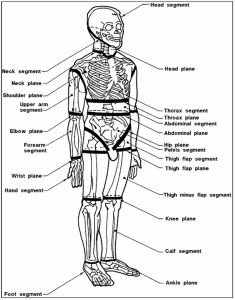
Picture 1: Motion segments of a human body [4]
Sonic detection
During inhaling and exhaling we can hear noises above the lungs which are called respiratory sounds. They are created by the airflow to and from the lungs. They are common for both healthy and ill breathing, which is caused by disease in the lungs. Analyzing the respiratory sounds we can identify a pulmonary disease of the respiratory track or other illnesses connected with respiratory problems. The volume of an ordinary breathing is 10dB, bad or ill breathing may have higher values. The value is high enough to be measured by a sensitive noise meter and further analyzed by noise analyzing algorithms [5]. This allows not only the identification of the breathing (whistling or wheeze) but also of the sneezing or coughing, their intensity might reveal a starting illness.
The other option is to detect snoring or other noises that indicate the presence of the vital functions. However, this detection might not be accurate because of the high noise levels and presence of other people. The system can react to a call for help, screaming or executing the commands. Voice recognition may be used to get a response to the stimuli, the system asks questions and analyses the answer.
Temperature based faults
The human body is, in fact, a complex system for regulating the temperature. It heats the inhaled and cools the exhaled air, in order to preserve the energy. Moreover, thanks to blood circulation and muscle activity it maintains an optimal temperature for proper body function. A failure of this system may be caused by wounding (massive bleeding), hypothermia or an illness, though the body is trying to defend itself. A hypothermed body directs the blood flow to the most vital organs to keep them warm as long as possible, an infected body raises the temperature.
Body surface temperature and its distribution might tell us a lot about the health condition or even about the particular illness. This method is commonly used to examine and cure vascular diseases, eye diseases, skin diseases and rheumatic joint diseases. It is also used as a supplementary method in examining the thyroid, searching for metastases in cervical and axial lymph nodes. In case of an unexpected death, which is not detected immediately, in a relatively short time (the time depends on the surrounding) the temperature of the body drops below the critical value and it is obvious that the person is dead. The person is identified as dead in a few hours, which eliminates the possibility of finding the body several days after death.
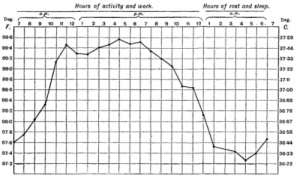
Picture 2: The body temperature during the day [6]
Flaw detection based on a chemical analysis
A chemical analysis of the urine offers a comprehensive picture of health. It helps us identify diseases of the urinary tract, genitals, kidneys, internal organs disorder, virus infections and traces of poisons and drugs. It is one of the fundamental methods of diagnostics. The values of proteins, bilirubin and glucose are the most measured ones. Glucose should not be found in the urine of a healthy person, neither should hemoglobin. Pus in the urine is caused by an abscess in the urinary tract or an inflammation of the urinary system. Physiologically the pH ranges between 5.5 and 6, vegetarians can have pH 7.
Too acidic or alkaline urine can distort other readings [7] [8]. In laboratory tests, the values of white blood cells, bacteria and urine crystals are measured. The biggest disadvantage of the analysis is the difficulty of analyzing individual substances. It is necessary to use specialized machines and indicators. Both are difficult to build in the facilities.
The stool consistency and the amount of trace elements are analyzed. The consistency might indicate gastric and intestinal diseases or food poisoning. Consistency can be measured by detecting the pH change and the change of density in the toilet. We are assuming that the liquid would have higher density if the stool were loose. Denser consistency does not change the density or pH of the water. The vomiting can be detected by rapid fall of pH, acidity. These measurements can provide general information about the long-term development of the stool or in acute or severe bowel conditions. It is important to note, that it is essential to identify the person who is sitting on the toilet.
Other possible changes are changes of the amount of oxygen in the room. Every single person inhales oxygen and exhales carbon dioxide. Men exhale 1.2*10-5 kg/s and women 1.0*10-5 kg/s on average. These changes indicate the presence of people or animals.
Table 1: The composition of the mixture of air by volume
| Gas | % Volume |
|---|---|
| Nitrogen (N2) | 78,084 |
| Oxygen (O2) | 20,9476 |
| Argon (Ar) | 0,934 |
| Carbon dioxide (CO2) | 0,0314 |
| Other gases | Traces up to 0,001818 |
This measuring has several flaws. First, we have to take into the account the amount of emissions based on the number of people in the room. Second, the measurement is relatively slow, based on the size of the room. However, the biggest flaw is the influence of ventilation on the results. The worst is the open ventilation, an opened window. When using air conditioning, the measurements may be carried out in the ventilation system.
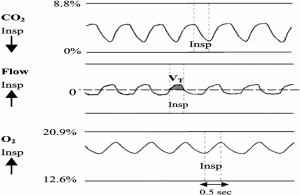
Picture 3: average values of CO2 and O2. Dotted line marks the boundaries of one breath. [9]
Flaw detection using responses to stimuli
One of the basic examination techniques in injuries or any other health conditions, when one is trying to determine what the patient’s problems are, is the attempt of conversation. This way, one finds out what is going on with the patient or what preceded the patient’s injuries. Moreover, we evaluate the ability of the patient’s clear responses and smooth reactions. Possible disorientation, confusion or other signs of clouded thinking may indicate shock or severe head injury. We can perform this test in the system. In case there is doubt, the system asks the predefined questions and evaluates whether the question was answered correctly and whether the response was quick or not. It is obvious that the system has to have a sensor, which triggers this test, and the correct answers to the questions.
The other possibility of testing the response is the ability of the inhabitant’s (patient’s) pupils to react to the light. Their ability to grow or shrink tells us about brain activity or even health condition. The loss of this reflex might be caused by a coma. We can perform this test using a digital camera, visual recognition algorithms and light switching option, however this test cannot be performed during the day, when we are unable to switch off all the lights, both in the interior and the exterior. Moreover, if the person passes out or if there is any other obstacle in seeing their pupils, we are unable to perform this test.
The last similar kind of test is a reaction to pain or movement. The idea is to evoke a reflex to pain by pinching, pricking or any other means. The missing reflex might indicate a brain or nerve endings dysfunction. However, this test requires being in touch with the person. We can ask the person to move one of their limbs and analyze whether the movement was performed. This test can be performed when we suspect a spinal cord injury.
Weight change flaw detection
The person’s weight and its development over time can inform of various problems with their metabolism, the urinary tract, the kidneys or the digestive system. It all depends on the rapidity of the change. If the change occurs in a short term we might have a suspicion that it is some kind of a defect. In case of long-term change, the system might warn the person that they are obese or underweight. The weighting should be linked to face recognition (or other identification system), so we can assign the values to the particular person. The scales should be in an area that is frequently used by all the inhabitants, but only one person should stand on it at a time to avoid discrepancies in weighting (it is also important to filter possible dynamic movements on the weight such as jumps etc. which would cause other irregularities).
Diseases detected using ICD 10
According to the International Statistical Classification of Diseases and Related Health Problems, every single disease has specific symptoms that we can measure. All inflectional or parasitic diseases have more or less the same symptom, fever. To be more specific, pale skin and excessive sweating accompany intestinal infection. In infections transmitted predominantly in a sexual way, the urine is cloudy, its pH is increased and bacteria and blood are present. Viral infections are characterized by skin and mucous membrane lesions accompanied by petechiae, punctate hemorrhages on the skin, or confluent bleeding under the skin i.e. hematoma. Change in stool consistency, diarrhoea and visible eggs and cells are symptoms of helminthic.
Tumors are difficult to measure, because they develop slowly and do not have external symptoms and if they do, it is too late to do something. A tumor may or may not have symptoms of any kind. There are no specific symptoms for the diseases of blood, blood-forming organs or some disorders involving immune system. Pale skin is the most common symptom for nutritional, hemolytic and aplastic or any other anemia. The coagulation disorder, purpura and other hemorrhagic diseases cause flush, a striking red face, bleeding and bruises. Increased body temperature may be due to certain disorders of the immune system.
In diseases of the endocrine, nutritional and metabolic substances only symptoms of individual diseases can be measured. In diseases of the thyroid faciall flushing, increased body temperature, sweating, limbs trembling, and increased heart rate are typical. Diabetes mellitus causes higher levels of glucose in the urine, the attack may result in accelerated breathing or worsening the responses, because the patient is basically in coma. It is either hypoglycemia or hyperglycemia. Defects in glucose regulation and pancreatic secretion have similar symptoms. Other similar illnesses result in either weight loss or weight gain. At the same time elements may or may not occur in the urine and stool.
We can measure mental and behavioral disorders mainly by EEG, though we can measure disorders caused by ingestion of psychoactive substances, by analyzing the urine or the response and change of the pupils. Nerve system illnesses do not have a common symptom, though inflammation illnesses of the central nervous system are accompanied by fever and in an advanced state by coma, so the patient does not response and wheezing is possible. The meningococcal disease causes punctate bleeding on the skin. Extrapyramidal, movement and other degenerative disorders of the nerve system the changes in EEG occur. Episodic and seizure disorders, epilepsy in particular, cause purpling, convulsions of either the whole body or limbs, wheezing, suffocation, sweating, the person is unable to response and after coming around they respond incorrectly to the questions.
From all the eye and adnexa diseases, the only measurable one is an infection of the eye. It is accompanied by fever and redness of the sclera. Cataracts eye leads to opacity of the lenses. Ear and the main tip diseases can be measured only if the infection causes fever or affects hearing in any way. Circulatory diseases may result in the change of the skin color, EKG changes or dysfunctionality of one of the limbs or organ and consequently its temperature change. Moreover, a coronary heart disease results in paleness, purpling, during the heart attack fibrillation, collapse, wheezing, cold peripherals and sweating may occur. Finally, vascular diseases in the brain cause weakness in one of the limbs, inability to move it and the ability to speak is also weakened or the person speaks rubbish.
Respiratory diseases result in fever, whistling during exhaling or inhaling, a worse condition may cause wheezing. Digestive disorders cause fever, vomiting, change in the consistency of the stool, either it gets loose or dense. Abdominal hernia is characterized by a deformity of the abdominal cavity. Other intestinal diseases cause a specific color change of the stool. The best way to measure symptoms of skin and under skin diseases is a visual change of the color or shape of the skin. The symptoms are redness, in particular, but also bunions, scabs, freckles, hair loss or even weeping wounds. We are unable to measure skeletal, muscular systems or connection tissue disorders. We can only rely on a geometry analysis of the posture, walking or individual movements.
Diseases of the urinary tract and genitals can be diagnosed with a chemical analysis of the urine, especially the density of the urine, the presence of blood and elements that are not supposed to be there. Kidney failure and urolithiasis have these symptoms: cessation of urine, swelling of the whole body and rapid weight gaining over a short time. Besides these, diseases of male genital organs and inflammatory diseases of female pelvic organs show an increase in body temperature.
It is very difficult to measure any symptoms during pregnancy, childbirth or postpartum. Some of the diseases cause an appearance of blood in urine or there is a change in EKG results of the child or swelling of the mother’s legs or a change in maternal uterine contractions measured by EMG. Unfortunately there are no symptoms for some conditions arising in the perinatal period, congenital malformations deformations, chromosomal abnormalities and subjective and objective symptoms, not included in abnormal clinical and laboratory findings that could be measured using the contactless method. It is because of the nature of the illness and the limitation of our measuring method.
However, if someone is injured, poisoned or has any other problems caused by some external factors, the situation changes dramatically. Depending on the injury, there is a whole list of measurable symptoms, for instance, the visual detection of redness, paleness, bruises or bleeding. Using the sonic detection we can identify wheezing, suffocation or screaming in pain, body temperature drops during hemorrhagic shock, traces of blood in urine or stool, diarrhoea or vomiting, excessive sweating in shock, slow responses to stimuli or changes in EKG or EEG. Usually, these injuries are accompanied by pain, which could help in diagnosing the specific problem.
There is no point in writing about the life-threatening external factors, because we do not have time to monitor the whole planet and even if we did we would be unable to act quickly enough to prevent any harm. Moreover, some of the diseases mentioned above are sources of these factors.
Vibrometer
Chen-Chia Wang, Sudhir Trivedi, Ponciano Rodriguez, Feng Jin, Susan Kutcher (Brimrose Corp. of America) and Narashimha S. Prasad (NASA Langley Research Center) have invented probably the most sophisticated system that meets the set criteria, the call it, the vibrometer. (This chapter is based on a requested technical documentation). Basically, it is based on measuring the body vibrations caused by heart contractions, using the Doppler effect and pulse laser. Similar devices are used in industry for measuring the vibrations of machinery. The device can easily decipher surface vibrations up to 10-12m while it provides a relatively accurate ratio between the signal and noise (SNR). The device detects five peaks of vibration caused by the contraction of heart muscle chambers, closure of the aorta, pulmonary valve closing, the contraction of the atria and the Papillary muscle contraction at the end phase of atrioventricular valves.
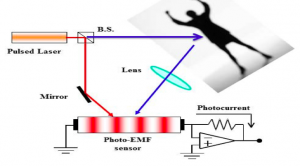
Picture 4: Principle scheme of a vibrometer
The technology of pulse laser vibrometer is based on a constellation of a light pulse light source and a type of a photo-conductor called the Photo-EMF sensor. Pulse light sources can either be Q-switched or mode-locked lasers and the Photo-EMF is a semiconductor component that is highly photosensitive to the order of the major changes in the resistance of the sensor light beam of specific wavelength. The interaction between the pulsed-light sources and the Photo-EMF sensor leads to Photo-EMF pulse laser-vibrometer (PPLV), which has excellent properties for vibration monitoring of surfaces, such as the human body (mainly because of the optical inequality). In the device itself, the pulsed-laser output of the light beam is split into two directions.
One beam guided directly to the Photo-EMF sensor and the other one is aimed to hit a human body at a specific distance. The scattered light beam is assembled by an array of lenses, because diffuse scattering is expected from an optically uneven surface, such as skin or clothes. Subsequently the beam is sent back to the photo-EMF sensor and it is joined with the original light beam. Based on this principle, we get the course of vibrations of the body, which we can further filter and separate from unwanted vibrations. We can use this device to measure heart activity and detect any failures of the heart muscle or Cardiac dysrhythmia.
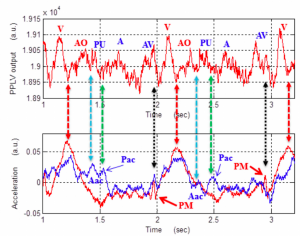
Picture 5: Vibrometer measurments compared to two accelerometers
In the picture we can see the comparison of the results from a vibrometer and two contact accelerometers. The red line represents an accelerometer placed at the top of the chamber and the blue line represents an accelerometer placed in the aortic area. There is also an approximate match of the beats between the accelerometers and the vibrometer. The measurement was then compared to the EKG.
Conclusion
Virtually there is no system, which would warn the inhabitants against a disease, which is starting to break out, or a failure of one of the basic functions and which would then call for help. The system should not restrict the inhabitants in their movement or comfort, thus the health monitoring system should take advantage of using a contactless technology. Therefore, it should be a system, which is able to measure all the external symptoms of life functions or various diseases, without the need of taking invasive actions or implanting sensors on the human skin.
Every single disease has, according to ICD, specific symptoms by which one can identify (diagnose) a specific illness. Some of these diseases have symptoms which we can detect using a specific contactless method. Chemical analyses are rather difficult to perform and tend to be incorrect, especially under the influence of the surroundings. A vibrometer, described on the previous page, provides a great way of detecting defects. By joining all these detection methods we are able to design a machine that would be capable of detecting all the health function failures and recognizing a vast number of illnesses, described in ICD.
It is better to use other detection methods just as supplementary methods. Improving the urine, blood or electromagnetic field analysis would have a rather positive impact on the detection system. Measuring, using individual methods, analyzing the data and realization of the functioning system are tasks, which are challenging and need to be processed. The practical application of the system is the main reason why to continue to develop and improve the system. One of the applications takes care of ill people at home, workers who need to be fit or in hospitals that do not have enough personal to take care of every single patient. However, the system could be used in regular houses or office buildings as a system of an in time warning against the possible illnesses or failures. It is always better to act just in time, rather than when the illness has already spread.
References
- Medzinárodná klasifikácia chorôb – MKCH 10, Národné centrum zdravotníckychinformácií [online]. Dostupné na internete:
< http://www.nczisk.sk/buxus/generate_page.php?page_id=551> - Pavlovičová,J.-Patrik,M.-Polec,J.2005. Číslicové spracovanie obrazu. Bratislava:Slovenská technická univerzita v Bratislave, Fakulta elektrotechniky a informatiky.2005. 95 s. ISBN 80-227-2301-0
- Lenka Slaná, 2006. Detekcia a sledovanie ludskej postavy v sekvencii obrazov:diplomová práca. Bratislava: Univerzita Komenského v Bratislave Fakulta Matematiky,Fyziky a Informatiky Katedra Aplikovanej Informatiky, 2006. 67 s.
- Man-SystemsIntegrationStandards ANTHROPOMETRY AND BIOMECHANICS, NASA [online].
<http://msis.jsc.nasa.gov/sections/section03.htm> - Bc. Michal Maťuš, 2010. Klasifikacerůznýchzdrojůzvukůpomocí metoduměléinteligence v průmyslu komerční bezpečnosti: Diplomová práca. Zlín: UTBveZlíně, Fakulta aplikované informatiky, 2010. 92 s.
- Post mortem interval, forensic medicine resources for medical students [online].
<http://www.forensicmed.co.uk/pathology/post-mortem-interval/> - Výsledky laboratórnych testov – moč,Ronnie.cz [online].
<http://medicina.ronnie.cz/c-551-vysledky-laboratornych-testov-moc.html> - VYŠETRENIE MOČU, Kardioklub SK [online]. Dostupné na internete:
<http://www.kardioklub.biznisweb.sk/info/o-vysetreniach/vysetrenie-mocu/> - Aloka L. Patel, KathyHarris, Bradley T. Thach, Inspired CO2 and O2 in sleepinginfantsrebreathingfrombedding: relevanceforsudden infant deathsyndrome [online]. Dostupné na internete:
<http://jap.physiology.org/content /91/6/ 2537.full>
Coauthor of this paper is BSc.Marek Vnuk, Translated by Tomáš Varga, Faculty of Electrical Engineering and Information Technology, Slovak University of Technology, Ilkovičova 3, 812 19 Bratislava, Slovak Republic

